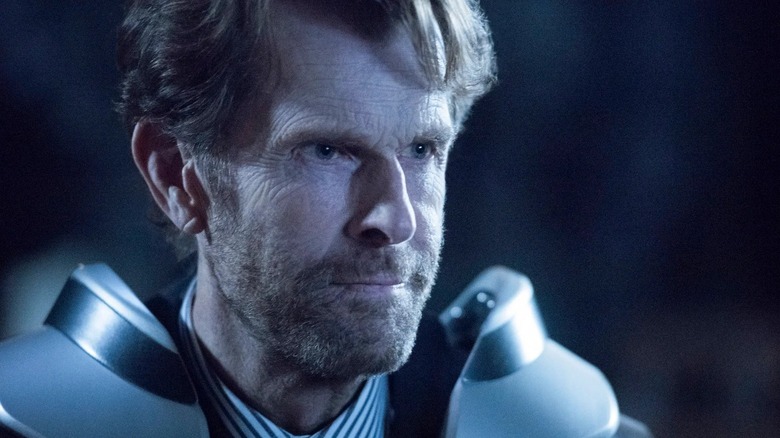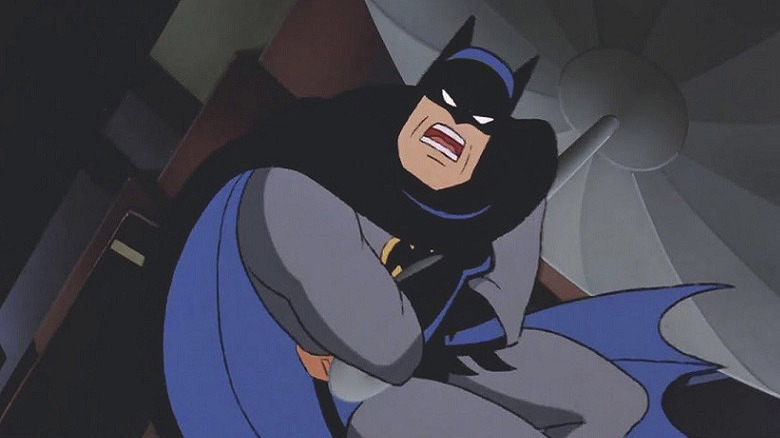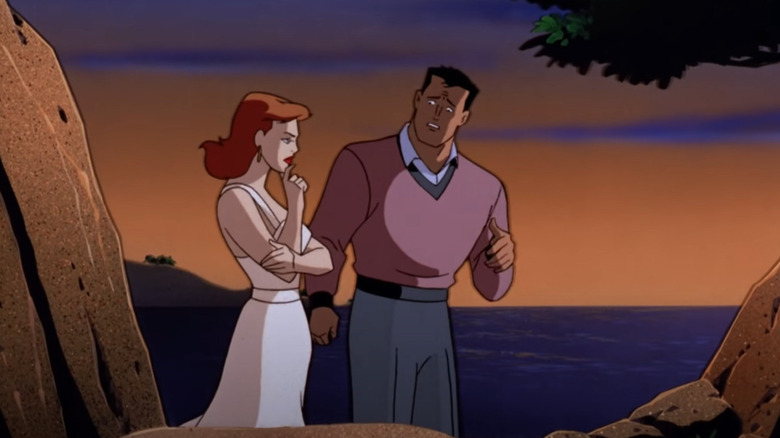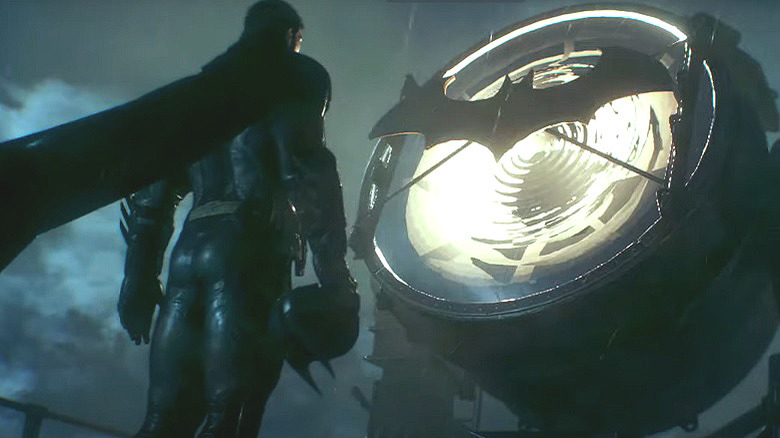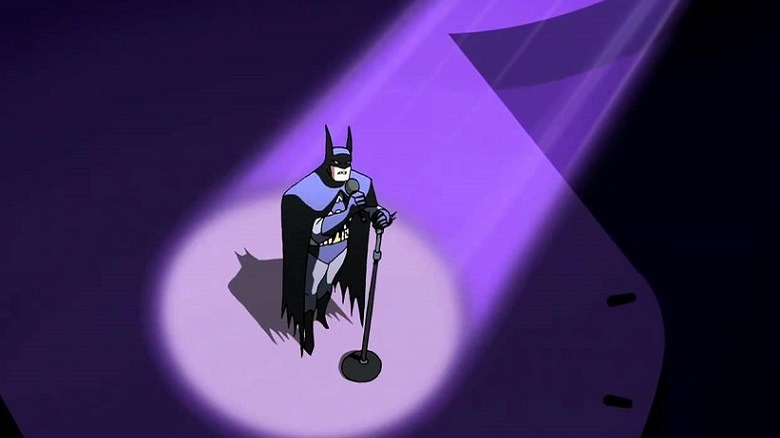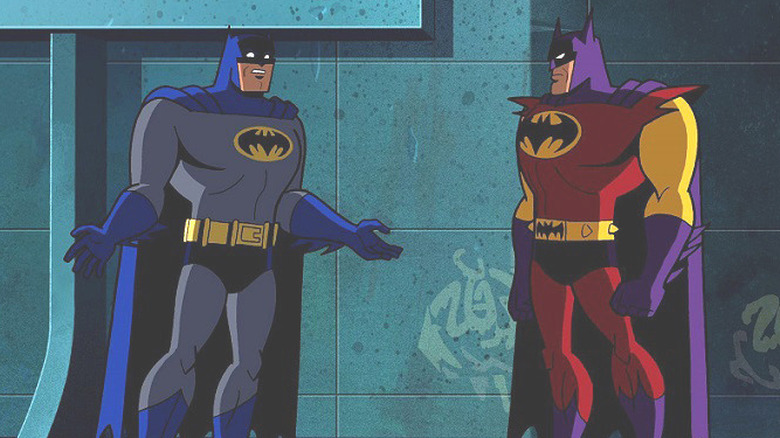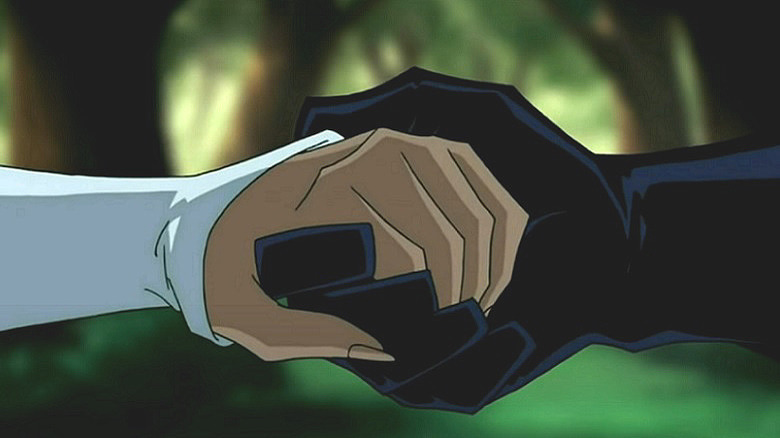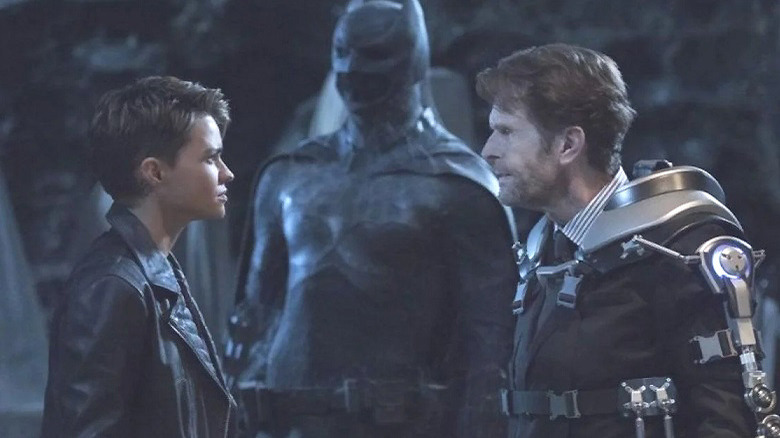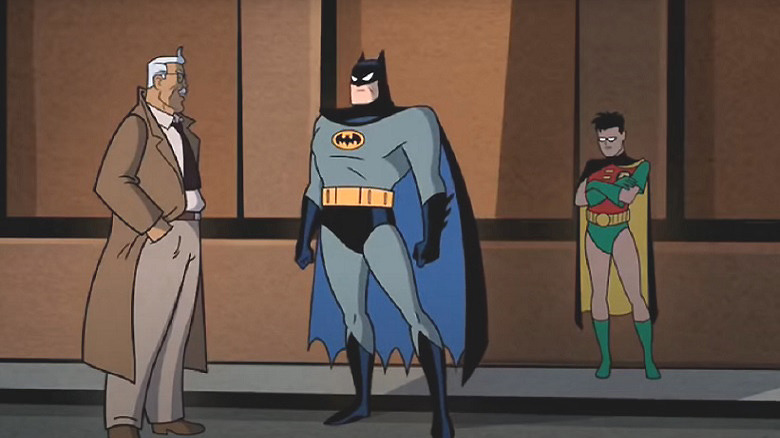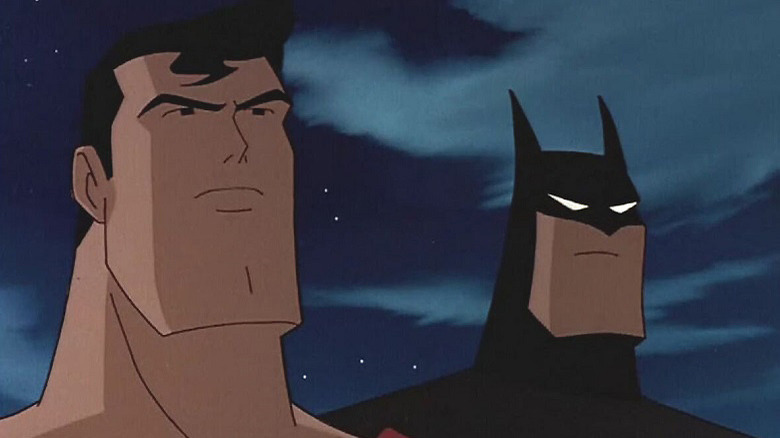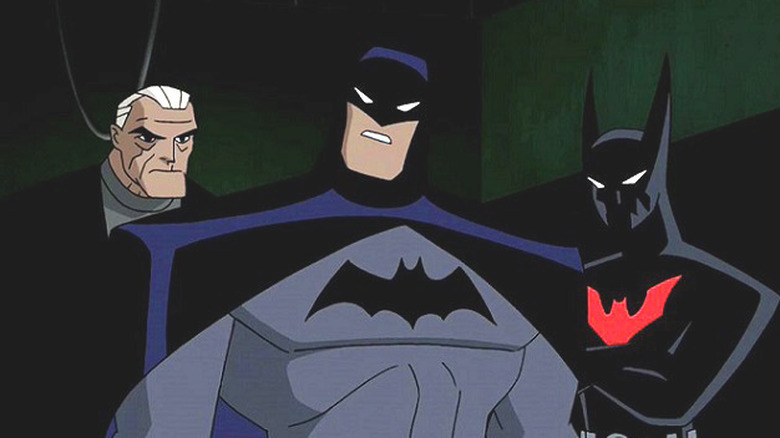Kevin Conroy's 10 Best Batman Moments
It's likely that when you read a Batman comic, you hear his voice. Whether it be the gravely threatening rasp of his Caped Crusader or the suave swagger of his Bruce Wayne, that's Kevin Conroy you're hearing.
He was the definitive voice of Batman for the past 30 years, portraying the role in TV, movies, video games, and a rare foray into live-action. Yet, that moody and driven Dark Knight persona couldn't have been any further from the reality of the man with the infectious laugh who loved to sing and was capable of penning a wonderfully honest account of the trials of being an openly gay actor.
The man who Mark Hammill said will always be his Batman died on November 11, 2022, leaving behind an incredible body of work and a legacy that will never be forgotten.
Let's switch off the Bat-Signal and take a few quiet moments to reflect on the enormous talent of the man and remember 10 of his best moments in that oh-so-familiar cowl and cape. He was vengeance. He was the night. He was Batman.
I am vengeance!
"Nothing to Fear" was the third episode of "Batman: The Animated Series" and pits our nocturnal hero against the Scarecrow, who's intent on revenge against Gotham City University. Thrown out for his somewhat unorthodox and illegal approach to his phobia research. the fear-obsessed villain has a particular grudge against his old employer.
Thanks to a poison dart filled with the straw-covered scoundrel's fear toxin, one of Bruce Wayne's greatest fears is revealed: being a disappointment to his deceased father. Floored by the overwhelming guilt of shaming the family name, remorse lingers with him, making him less than effective as both Batman and Bruce Wayne.
Among a series of many moments that would be equally worthy of this list, one scene, in particular, stands out in this excellent episode. With a performance that will remind you of why Conroy was the definitive Batman, through the strength of will alone, the Dark Knight ultimately conquers his fears with a defiant cry of "I am vengeance, I am the night. I am Batman!" It's rousing stuff, both battle cry and mission statement. It's a line that epitomizes the Batman, and it's hard not to punch the air upon hearing it — and equally difficult to think of anybody but Conroy nailing the delivery so well. It's a quote that would serve him well, cementing Kevin as the definitive Batman.
Sliding Bat-Doors
1993's "Mask of the Phantasm," released theatrically by Warner Brothers Animation, is set between the first and second seasons of "Batman: The Animated Series" and borrows elements from both the "Batman: Year Two" and "Batman: Year One" graphic novels. A deadly new assassin is haunting the streets of Gotham, and Batman is blamed for the murders. Bruce Wayne has to clear his name as well as work out the connection between this mysterious killer and an old flame.
"Mask of the Phantasm" is not only one of the best animated Batman movies but arguably one of the best portrayals of the Bat ever. Kevin Conroy is reliably excellent throughout, but there is one pivotal scene that stands out for its importance in this particular continuity. Our hero stands on a precipice (not literally, but figuratively). The young Bruce is yet to fully commit himself to the Batman persona, having found some spark of hope in his romance with Andrea Beaumont. He asks her to marry him, and she accepts, but shortly thereafter returns his ring with a note of refusal.
Bruce is distraught and with the last of his optimism now snuffed cruelly out, feels that taking the mantle of the Bat is his only recourse. Conroy's performance doesn't understate how much of a catalyst this single event is for the entirety of his character's forthcoming fate, and it's hard not to feel for this spurned, tragic soul.
The Knightfall Protocol
With Batman's identity revealed by the Scarecrow, the Dark Knight stands on the rooftop of Gotham City Police headquarters, surveying the city he once saved but can no longer serve. Bidding a touching farewell to Commissioner Gordon, who thanks him for his service, Batman is picked up by the Batwing for a final journey to Wayne Manor. This will be the end of the Batman and the erasure of his legacy to keep all those who knew him and worked with him safe.
The Knightfall Protocol is in motion, a countermeasure to destroy all traces of the Batman. An exhausted Alfred understands what this means for the two men as they meet in the manor to carry out the final stages of the plan. Wayne Manor, the Batcave, and seemingly Bruce and Alfred are obliterated in a huge explosion.
A final cutscene upon completing "Arkham Knight," the final part of the trilogy that includes "Arkham Asylum" and "Arkham City," which all share the same voice cast. A fitting end to Kevin Conroy's starring role in the video game series, it's a scene with very few words, but the heartache and weary resignation of Bruce echoes deeply through every line. It's a poignant and fitting end to the series, concluding a brilliant showcase for Conroy's range and talent. Animators may make the main character look like Batman, but Kevin Conroy brought him to rich, vivid life.
Batman sings the blues
Bruce Wayne learned a great many disciplines to be worthy of the cowl and cape. As well as learning how to keep his body and mind in peak condition, he mastered martial arts and detective work. In "This Little Piggy," the fifth episode of the first season of "Justice League Unlimited," we're lucky enough to witness a rarely utilized skill set of the Dark Knight. Attempting to placate the sorcerer Circe, who demands that he give away something hidden, the dulcet-toned detective takes to the stage and launches into song with "Am I Blue?" a jazz blues classic by Akst and Clarke.
Proving to be as dexterous with his vocal cords as he is with a Batarang, Batman captivates the audience, including a wide-eyed Circe and Zatanna, who are captivated by his every word. Even after Circe has fulfilled her side of the bargain, they let him sing on.
It was a rare opportunity for Kevin Conroy to show off another of his talents, his gravelly deep delivery perfectly suiting the melancholic lyrics of the 1929 classic. Knowing his great love for singing, it was casting and voice director Andrea Romano's idea to have the Dark Knight burst into Bat-song, and it's a truly lovely and contemplative moment that shows a more soulful side to the angst-driven Bat. After fans clamored for a release of the full version of the song, Kevin was gracious enough to record it for his website, where you will find numerous beautiful examples of this rarely employed skill.
The Batman of Zur-En-Arrh
"The Brave and the Bold" was a brave departure for Batman animation. A tribute to the Silver Age of comics (1956-1970), it was both brighter and more optimistic than "Batman: The Animated Series" and was as much a platform for other DC superheroes as it was the Dark Knight, here voiced by comedian Diedrich Bader (whose can also be heard as the narrator in the Weird Al Yankovic biopic "Weird").
Before being reinvented by writer Grant Morrison as a mental failsafe for Batman should his mind ever be compromised, the Batman of Zur-En-Arrh was an alternate Batman from another world. It's this version that we meet in Episode 9 of Season 2 ("The Super-Batman of Planet X") of "The Brave and the Bold." Kevin Conroy voices this gaudy red, yellow, and purple variant of our Caped Crusader. It's a fun throwback to a simpler age, with the planet Zur-En-Arrh a world of retro-futuristic architecture — like something from Flash Gordon, all ray guns, gleaming silver towers, and giant robots. In this world, our Batman finds that, like Superman on Earth, this planet gives him superpowers, and the Batman of Zur-En-Arrh's abilities pale by comparison. However, over-confident in his new abilities, Bruce Waynrfails to consider he might share a similar weakness with Superman — and it is nearly his undoing.
Conroy relishes every moment playing his particular Batman and portraying the humility forced upon him by this new unearthly visitor. It's an aspect of the character that we haven't seen before, and it's a testament to Conroy that he pulls it off with aplomb. The final act is a delight, with Batmen teaming up against an alternative Lex Luthor (Xel Rothul, voiced by Clancy Brown).
A rare moment of compassion
"Epilogue" is the final episode of Season 2 of "Justice League Unlimited" and, as a crossover with "Batman Beyond", has a lot of excellent revelations and stand-out moments. As well as revealing the true relationship between Bruce Wayne and Terry McGinness, the Batman of "Batman Beyond," there's a moment that marks it as one of the best from all three seasons.
Batman has been tasked with taking out Ace, a superhuman capable of telekinetically warping reality. She's dying of an aneurysm, and her death could cause a psychic shockwave capable of killing everybody in miles. Batman is convinced he's the only member of the Justice League who can resolve this issue due to his past experiences with the psychic girl. Confronted with the enormous moral weight of breaking his "no-kill" policy, Batman makes his way into the imaginary fortress domain that Ace has made her home. Their ultimate confrontation is equally poignant and heartbreaking. Far from a physical conflict, it's simply a final meeting. Ace suspects her fate and Bruce's real reason for being there. Bruce and Ace are two remarkably similar souls, both of whom had their childhoods wrenched away from them, but Batman has no intention of killing her. He simply sits with her until she dies peacefully.
In the hands of certain writers, Batman can often be a bit one-note. "Epilogue" proves that in the hands of the right writing team and an acting talent capable of pulling it off, Batman can be more multi-dimensional, more believable, and more real. This rare and quiet expression of compassion speaks more to Bruce's character than any number of fight or action scenes.
In the actual Bat-Flesh
Sharing the name and plot elements of the multi-title 1985 DC Comics extravaganza, "Crisis on Infinite Earths" was a crossover of the various CW TV series that aired in 2019. A great many actors returned to reprise roles they hadn't played for years, including Tom Welling as Superman and Burt Ward as Robin, but the standout moment is in the second installment with the live-action superhero debut of an actor whose voice we all know but whose face many of us wouldn't recognize.
In a bit of dream casting, the Batman of Earth-99 is played by Kevin Conroy, finally getting to fill the considerable shoes of Bruce Wayne. This Bruce is a jaded killer, having long since abandoned his "no kill" code. Wounded by one too many fights, he's kept upright (and possibly alive) by a bulky exoskeleton (possibly inspired by the one from the superlative graphic novel "Kingdom Come" by Mark Waid and Alex Ross).
It was a delight for fans to see Conroy finally portray onscreen the role he'd made his own, and his performance is outstanding. This is Bruce Wayne with the weight of the world on his exoskeletal shoulders, world-weary and exhausted. Dark reflections of our favorite superheroes are rarely done well, but Conroy makes this Batman believable. Driven by awful necessity, It's not hard to see why this particular Bruce has taken a sinister path.
Holy comic timing, Batman!
Kevin Conroy took the responsibility of his role as Batman seriously and was loathe to do anything to cheapen the character or diminish him. That said, in the anarchic world of the Teen Titans in "Teen Titans Go," anything can go, and so it was a delight to see Kevin using this opportunity to exercise his not-inconsiderable comedic chops.
"Teen Titans Go!" has its critics — mostly because of how it so dramatically varied from its predecessor, "Teen Titans." However, it's a rich sandbox for lampooning the often-po-faced seriousness of the DC Universe, and Conroy's debut in the series is no exception to that.
The ninth episode of the fifth season, "Real Orangins" (and yes, that isn't a typo) recounts Robin's attempt to document the true origin tale of the Teen Titans. A flashback at the start of the episode (animated in the style of the original Batman Animated Series) shows Batman in discussion with Commissioner Gordon, with Robin hidden in Batman's shadow. Heavy-handed metaphor aside, it's a joy to see Conroy having some fun with the character. He rarely got the opportunity, so it was nice to see him given that freedom in the anarchic world of "Teen Titans Go." Batman asking Robin if he would remain his partner if he bought him some slightly larger shorts is unforgettable.
Batman vs. Superman
A meeting between the two biggest chins in the DC animated universe was inevitable, and it was in 1997, in Season 2, Episode 16 of "Superman: The Animated Series" that they finally joined forces. In "World's Finest" (named after the comic series that began in 1941, featuring both Superman and Batman), Lex Luthor has employed the Joker to kill Superman, and Batman has tracked the Clown Prince of Crime to Metropolis.
Of course, Superman isn't going to happily let an unknown vigilante operate on his streets, so conflict is inevitable. What's impressive about Conroy's performance is their first encounter in which Batman's confidence, almost borders on arrogance. Even when facing a virtually godlike being in the form of Kal-El, he barely flinches. It was the confidence that Kevin Conroy brought to the character that made his portrayals of both Bruce Wayne and Batman so effective. Such is the Dark Knight's faith in himself and his abilities, that he doesn't believe Superman is to be feared. He is merely an obstacle that he needs to remove.
Tim Daly returns from the animated series to voice Superman, and the full series of three episodes is an example of two voice actors at the top of their game. Seeing Superman and Batman, two giants from their own amazing series, interacting is thrilling, and Conroy and Daly casually play with that expectation, delivering three of the show's best episodes.
Batman cubed
What's better than one Batman? Three Batmen! Transported 50 years into a dystopian future in which many of his fellow heroes have given their lives, Batman, accompanied by Terry McGinnis' Batman of the year 2039, confronts his older self. "The Once and Future Thing, Part 2: Time Warped" was the final episode of the first season of "Justice League Unlimited," the 2004 follow-up to "Justice League." The initial meeting between young Bruce and old Bruce goes as well as you'd expect, with the adage about an immovable object meeting an irresistible force springing to mind.
It's to Conroy's credit that, even though both versions of Bruce Wayne sound identical, you can identify either in any particular scene by simply hearing them talk. Older Bruce is angrier, even more arrogant and cocksure, than his younger variant and can be identified by Conroy's voice acting alone.
Both episodes of "The Once and Future Thing" saga are great fun and are elevated by Conroy's presence, with Batman acting as both anchor and leader for the disparate characters featured in the two-parter. Conroy's Batman needs to be listened to, and it's a shame that it's a role that he'll never play again — but what a body of work he leaves behind as his Bat-Legacy.
